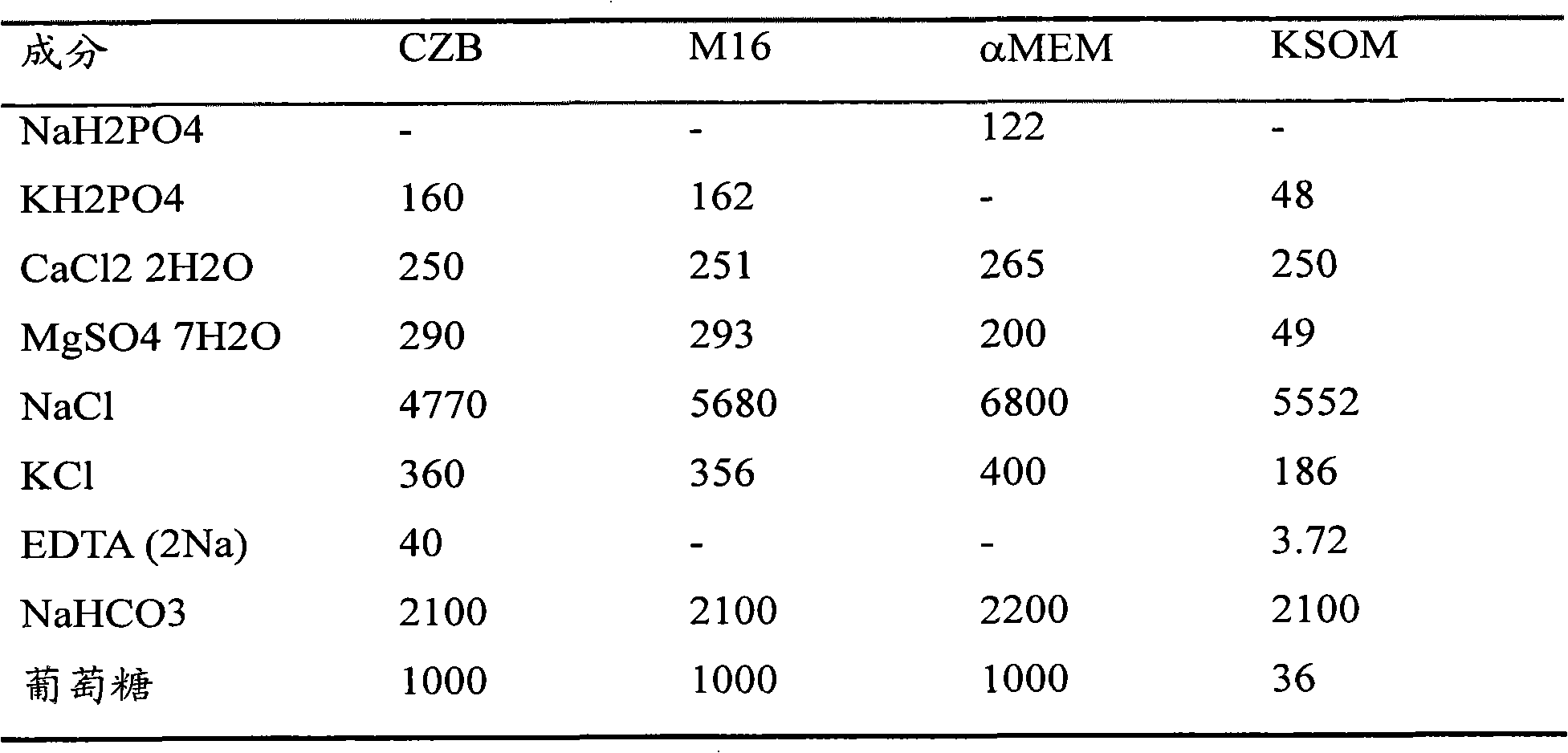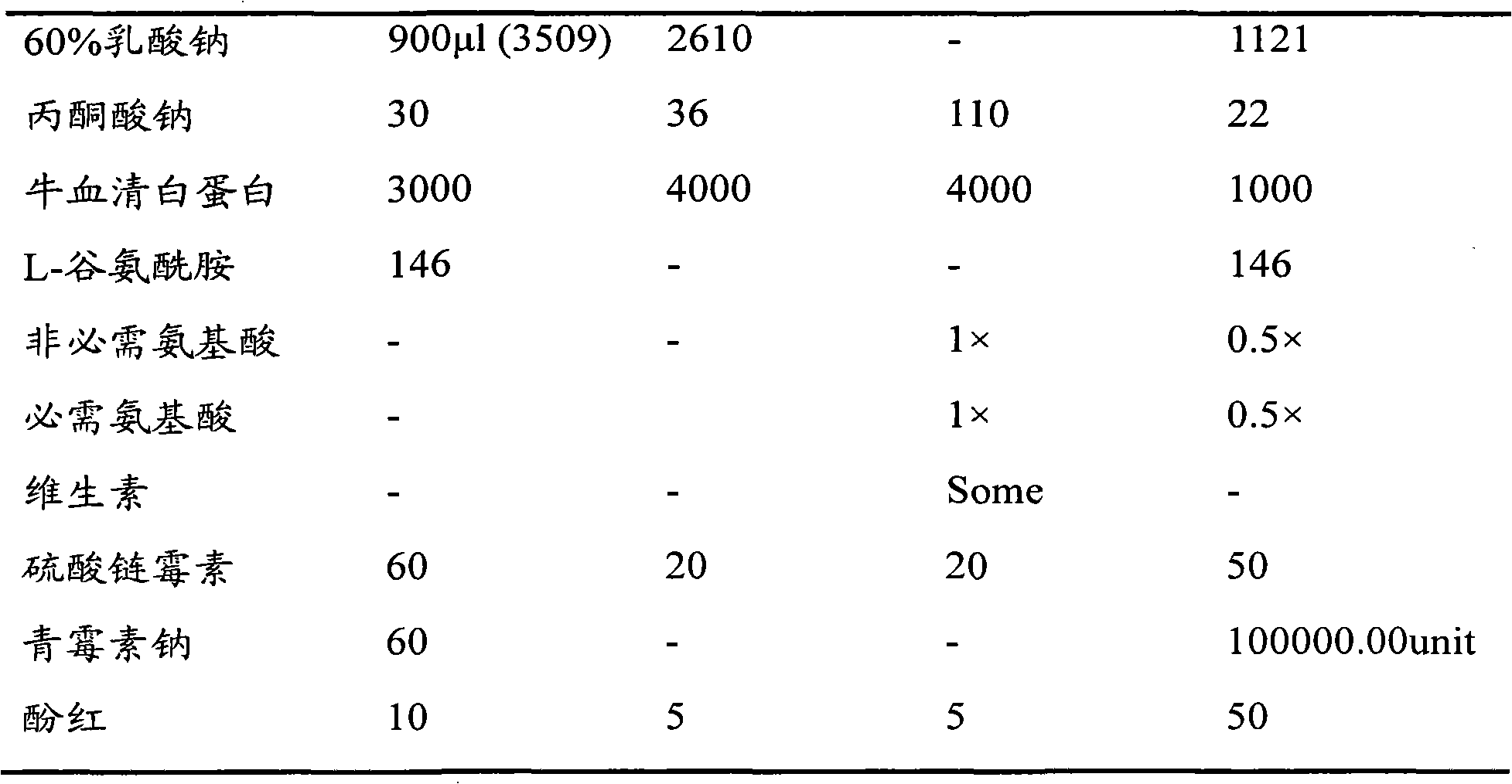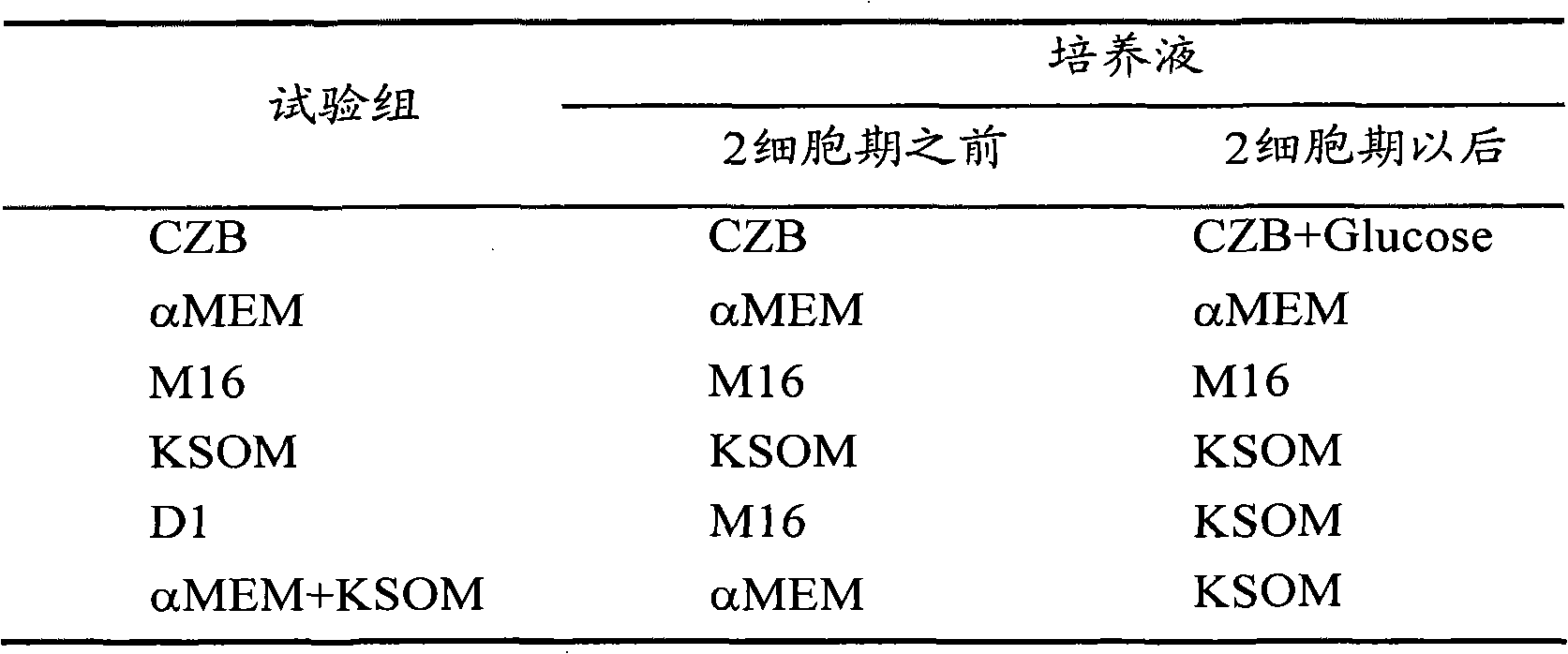Modified culture method for promoting cloned mouse embryonic development
A technology of cloning embryos and culture methods, applied in tissue culture, biochemical equipment and methods, cells modified by introducing foreign genetic material, etc., can solve problems such as the impact of cloned embryos, and achieve the effect of improving the development rate
- Summary
- Abstract
- Description
- Claims
- Application Information
AI Technical Summary
Problems solved by technology
Method used
Image
Examples
Embodiment Construction
[0013] Materials and Methods
[0014] 1 reagent
[0015] Unless otherwise specified, all reagents used in this study were products of Sigma (St.Louis, MO).
[0016] 2 test animals
[0017] B6D2F1 mice (C57BL / 6×DBA / 2, 8-12 weeks) were used to provide oocytes and granulosa cells, and C57BL / 6 (7-8 weeks) and ICR female mice (8-12 weeks) were used to provide fertilized eggs. 8-12 weeks ICR female mice also served as pseudopregnant recipients. The 8-12 week old ICR male mice are used as normal breeding male mice, and secondly, ligated and used as pseudopregnant male mice. DBA male mice, C57BL / 6 and ICR female mice and ICR male mice were purchased from Beijing Weitong Lihua Co., Ltd. B6D2F1 mice were bred in this laboratory, and all mice were kept in a clean environment.
[0018] 3 medium
[0019] Table 1 Components of each culture medium
[0020]
[0021]
PUM
 Login to View More
Login to View More Abstract
Description
Claims
Application Information
 Login to View More
Login to View More - R&D
- Intellectual Property
- Life Sciences
- Materials
- Tech Scout
- Unparalleled Data Quality
- Higher Quality Content
- 60% Fewer Hallucinations
Browse by: Latest US Patents, China's latest patents, Technical Efficacy Thesaurus, Application Domain, Technology Topic, Popular Technical Reports.
© 2025 PatSnap. All rights reserved.Legal|Privacy policy|Modern Slavery Act Transparency Statement|Sitemap|About US| Contact US: help@patsnap.com



